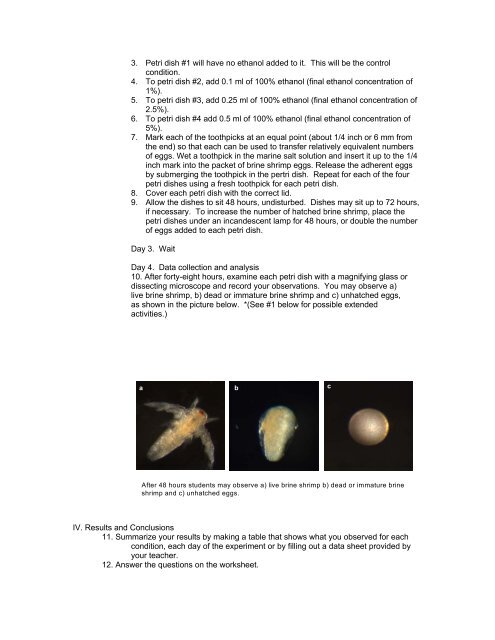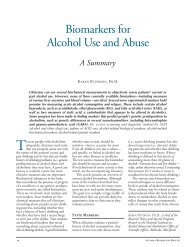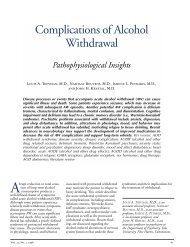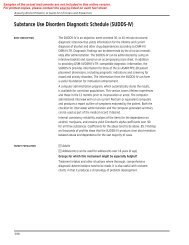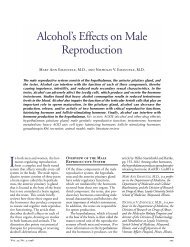Alcohol Syndrome (FAS) and Other Alcohol-Related Birth Defects
Alcohol Syndrome (FAS) and Other Alcohol-Related Birth Defects
Alcohol Syndrome (FAS) and Other Alcohol-Related Birth Defects
Create successful ePaper yourself
Turn your PDF publications into a flip-book with our unique Google optimized e-Paper software.
3. Petri dish #1 will have no ethanol added to it. This will be the control<br />
condition.<br />
4. To petri dish #2, add 0.1 ml of 100% ethanol (final ethanol concentration of<br />
1%).<br />
5. To petri dish #3, add 0.25 ml of 100% ethanol (final ethanol concentration of<br />
2.5%).<br />
6. To petri dish #4 add 0.5 ml of 100% ethanol (final ethanol concentration of<br />
5%).<br />
7. Mark each of the toothpicks at an equal point (about 1/4 inch or 6 mm from<br />
the end) so that each can be used to transfer relatively equivalent numbers<br />
of eggs. Wet a toothpick in the marine salt solution <strong>and</strong> insert it up to the 1/4<br />
inch mark into the packet of brine shrimp eggs. Release the adherent eggs<br />
by submerging the toothpick in the pertri dish. Repeat for each of the four<br />
petri dishes using a fresh toothpick for each petri dish.<br />
8. Cover each petri dish with the correct lid.<br />
9. Allow the dishes to sit 48 hours, undisturbed. Dishes may sit up to 72 hours,<br />
if necessary. To increase the number of hatched brine shrimp, place the<br />
petri dishes under an inc<strong>and</strong>escent lamp for 48 hours, or double the number<br />
of eggs added to each petri dish.<br />
Day 3. Wait<br />
Day 4. Data collection <strong>and</strong> analysis<br />
10. After forty-eight hours, examine each petri dish with a magnifying glass or<br />
dissecting microscope <strong>and</strong> record your observations. You may observe a)<br />
live brine shrimp, b) dead or immature brine shrimp <strong>and</strong> c) unhatched eggs,<br />
as shown in the picture below. *(See #1 below for possible extended<br />
activities.)<br />
a<br />
b<br />
After 48 hours students may observe a) live brine shrimp b) dead or immature brine<br />
shrimp <strong>and</strong> c) unhatched eggs.<br />
IV. Results <strong>and</strong> Conclusions<br />
11. Summarize your results by making a table that shows what you observed for each<br />
condition, each day of the experiment or by filling out a data sheet provided by<br />
your teacher.<br />
12. Answer the questions on the worksheet.<br />
c


